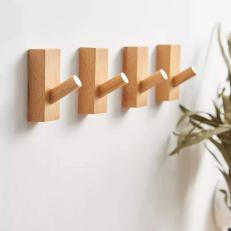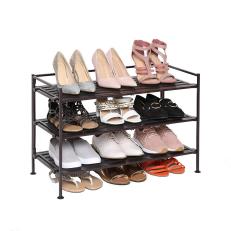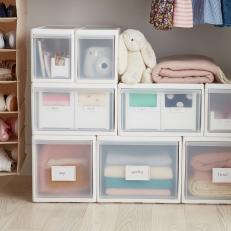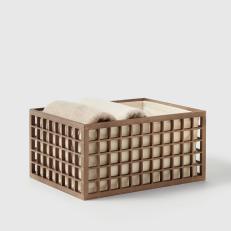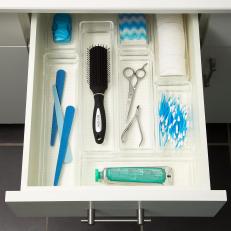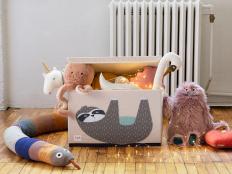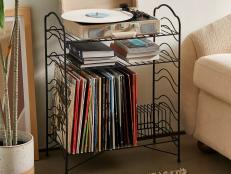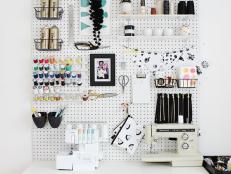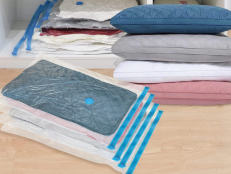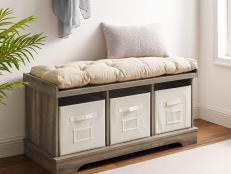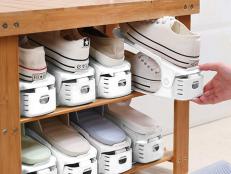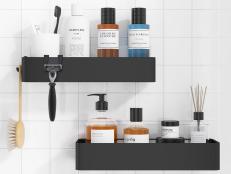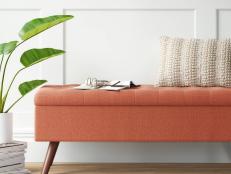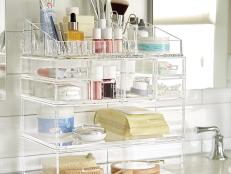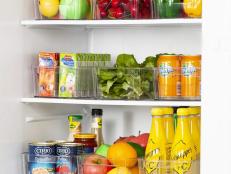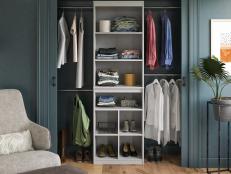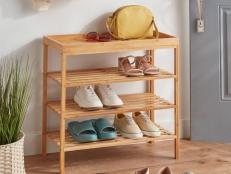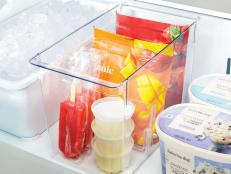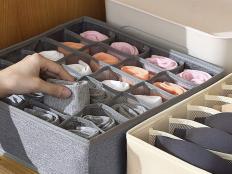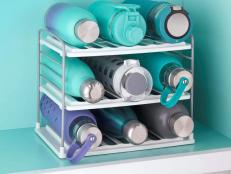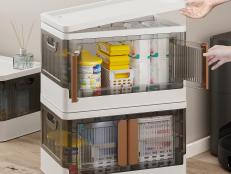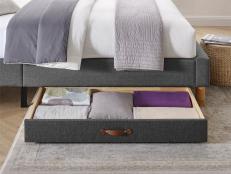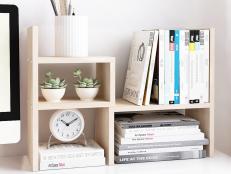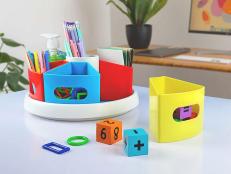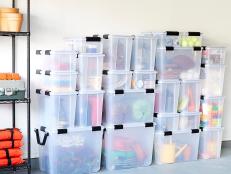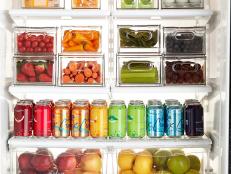How to Get Organized for Good, According to Professional Organizers
The experts are sharing all of their secrets on the storage solutions they use as professional organizers to get picture-perfect spaces that work for real life.

Their mission is to help streamline routines, beautify storage and create functional homes. Professional organizers work magic, transforming everyday mess into practical displays. We spoke with some experts to learn their methods and gather a list of must-haves for achieving organization nirvana. While their tips and approaches sometimes differed, they all mentioned how important it is to bring order and calm to our chaotic and messy lives in the prettiest way possible.
So, get ready to clean out your drawers, closets and cabinets. Below, find genius tips and products the pros use in real clients' homes to get that harmonious composition of functional-yet-beautiful spaces.
For Closets
Shira Gill, organizing expert behind Shira Gill Home and best-selling author of Minimalista: a Your Step-by-Step Guide to a Better Home, Wardrobe, and Life, starts by purchasing uniform hangers (after clients do a little purging, of course). "Swap out all the hangers so that they're uniform, all hanging in the same direction and all the same color and style," she said. "I do that to create a cohesive look for the eye, and I feel like it's an instant boost for your closet. It's a small investment that goes a long way."
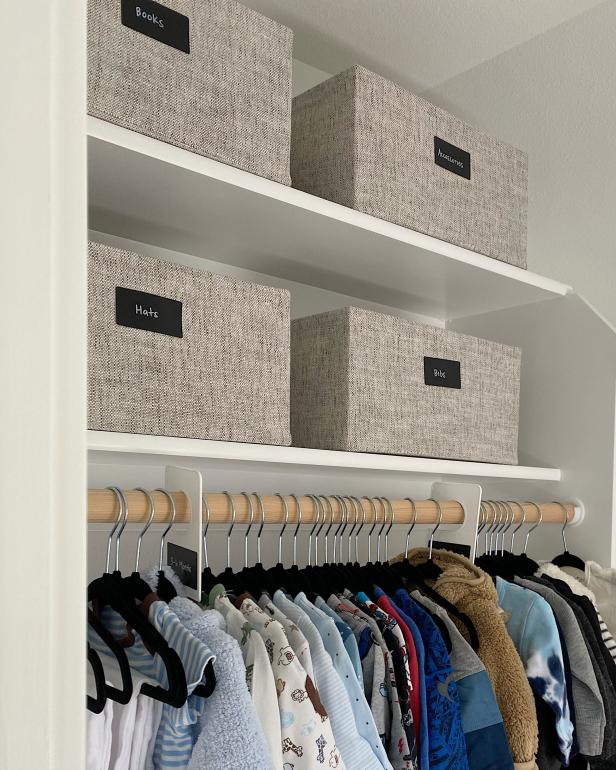
NEAT Method
If your child is too small to reach hangers, Gill suggests using hooks. In fact, she hangs hooks all over her house just to keep stuff off the floor. "I've yet to meet a child who will hang anything on an actual hanger," said Gill, laughing. "Hanging hooks at arm's reach for everyday jackets can be kind of a game-changer."
Maybe your hanging space is limited but you have shelves galore. Enter bins and dividers. Gill uses these bins because they're affordable, made of natural materials and have labels for easy organization. Both Gill and Holly Blakey of Breathing Room Organization recommended acrylic shelf dividers to create boundaries and prevent loose items, like jeans and sweaters, from toppling.
As for all of those shoes? Lisa Ruff of Neat Method suggests shoe racks or acrylic bins. "A shoe rack will utilize vertical space under hanging clothes that would otherwise go unused," Ruff said via email.
Shop the Pros' Picks
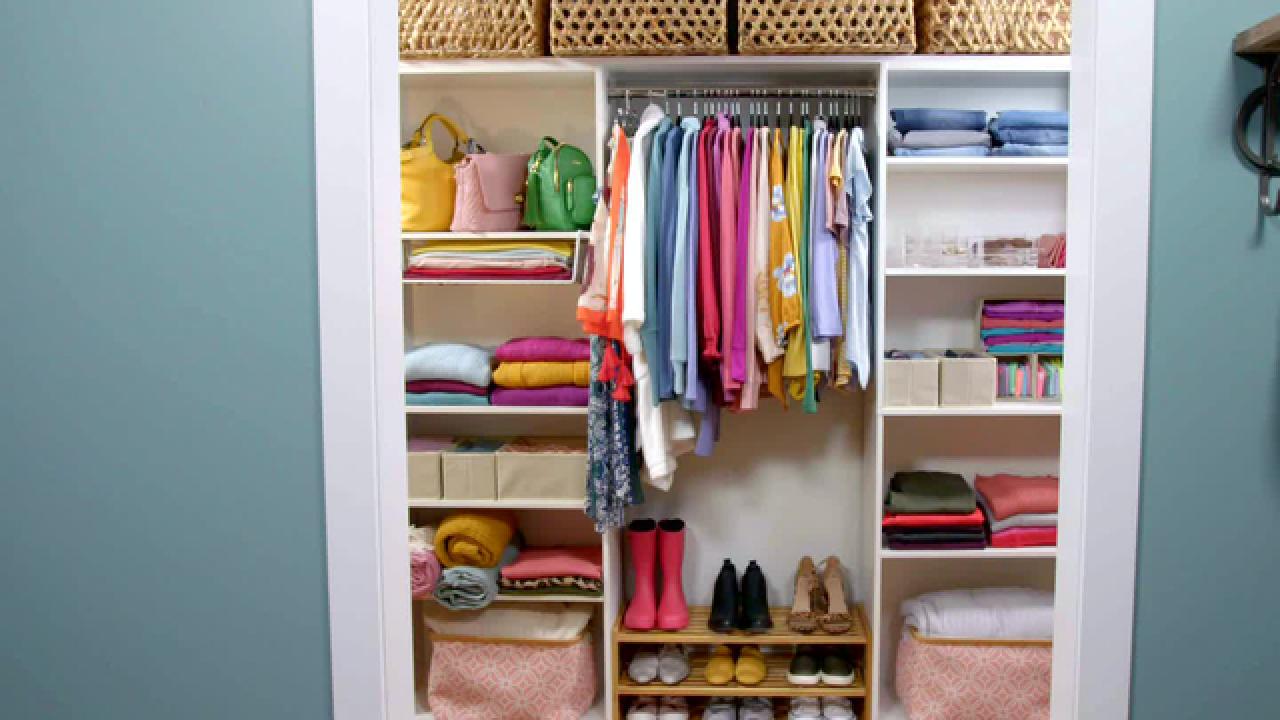
For Pantries
So, what's the secret to getting those Pinterest-worthy pantries we all have saved to our "Home" boards? All of the experts we talked to agreed that decanting and grouping will do wonders for your overstuffed pantry.
"Baskets allow you to create categories and keep them together, like 'Dinner Prep' and 'Sweet Treats'," said Ruff. "Decanting also cuts down on visual clutter which makes a space feel calmer."
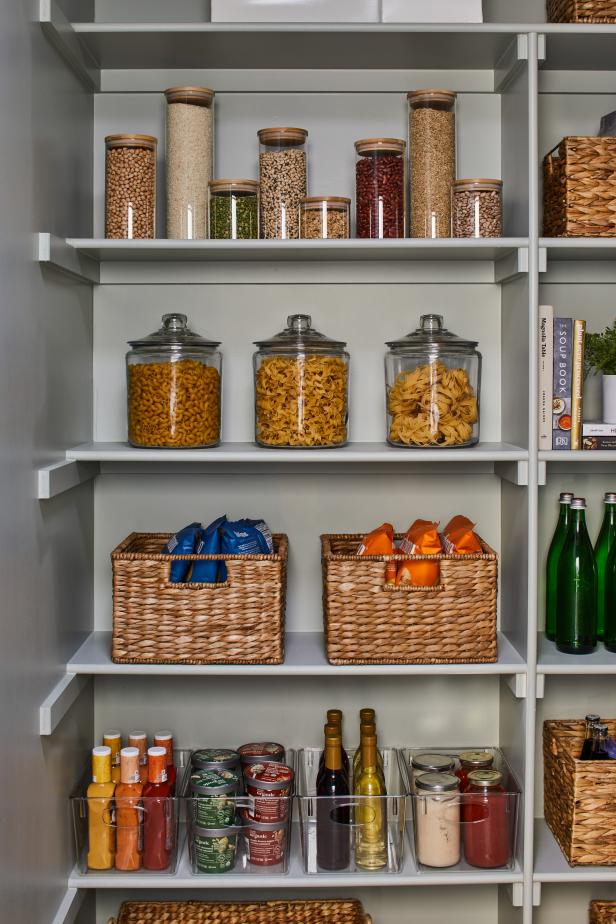
Laurey Glenn
Natural wicker brackets and glass containers bring organic elegance to this walk in pantry with large shelves for ample additional storage.
And for families with rambunctious little ones? Blakey, a mom of three, suggests using acrylic canisters and labeled water hyacinth bins. "Do what makes sense for accessibility," she said. Storing healthy snacks in labeled bins and plastic containers at a safe height allows kids to reach for the good stuff, while "a little higher up could be glass canisters for mom's bars or bulk pasta and rice," she added.
Ryan Eisland from the Home Sort offered up a completely unique approach to storing produce. "One of our favorite hacks is to use magazine holders to sort onions, potatoes and garlic," she said. "They work great in pantries or on countertops and come in so many stylish finishes."
Shop the Pros' Picks
For the Kitchen
Between utensils, measuring cups, cooking gadgets and mixing bowls, kitchen drawers easily succumb to chaos. "For all organizing, it is essential to create boundaries. Drawers are like large baskets or bins that still need boundaries," Ruff said. She likes using bins inside large drawers to help categorize similar items so that you can easily remove the bin when you need something specific.
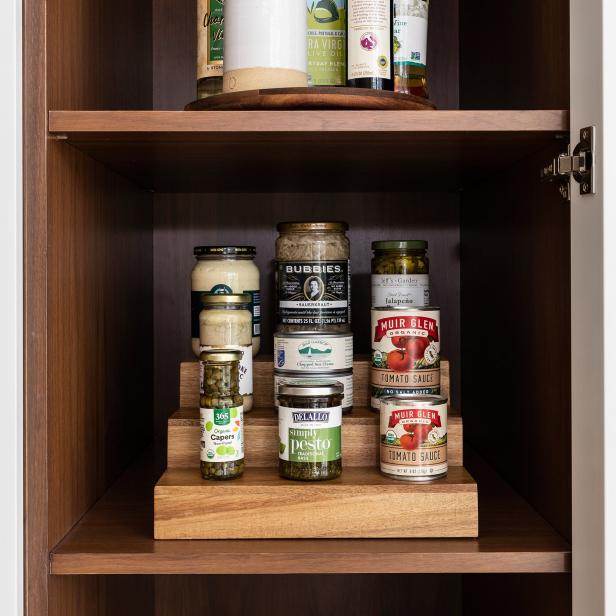
NEAT Method
Blakey seconds Ruff's tip for organizing drawers with bins. "For deep drawers, I definitely recommend, and in my clients' homes I use, deep acrylic bins — they're light; they don't break; they act as their own drawers. It creates the ability to not lose things but also to retrieve things easily," she said.
For shallow utensil drawers, Eisland uses sping-loaded bamboo drawer dividers to neatly separate whisks, tongs, silverware, etc. "They are an easy fit in most drawers, and the structure they provide is a game-changer," she said. "Drawer dividers take messy drawers and give [them] just the right amount of structure so your utensils, hand towels or kitchen tools don't move around."
Shop the Pros' Picks
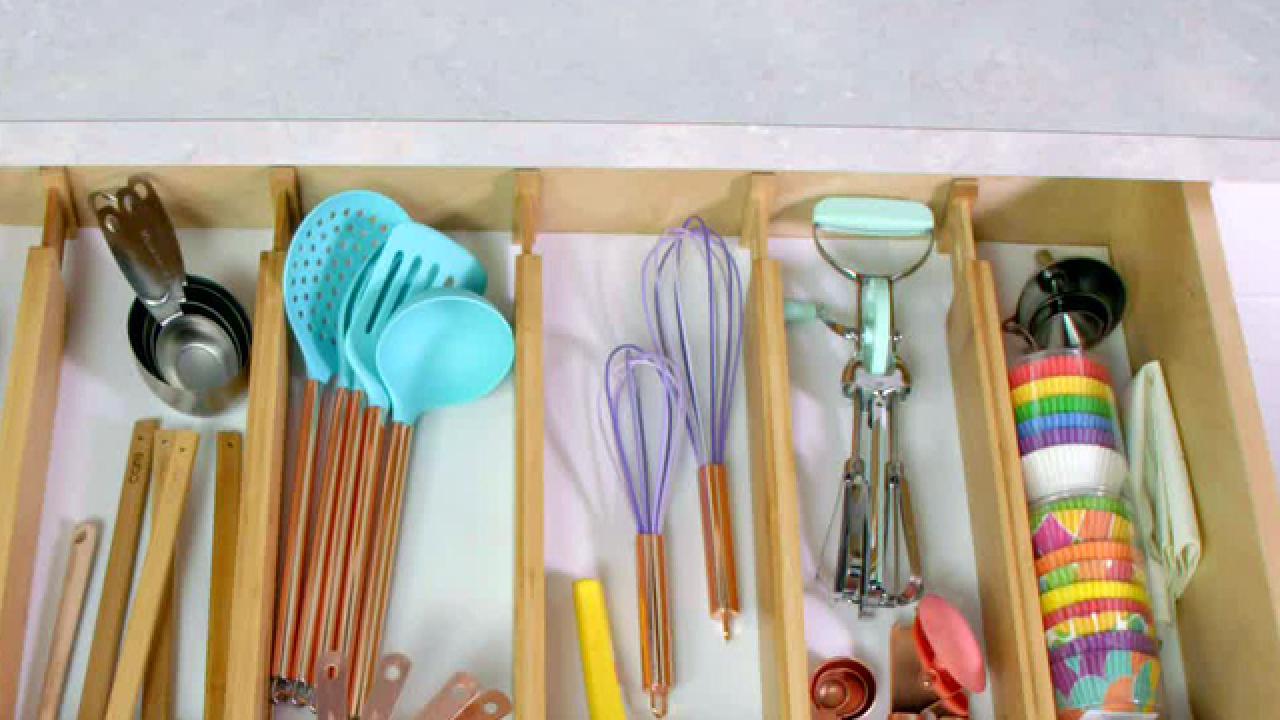
For Linen, Entryway and Other Small Closets
Small closets that you may not reach for as much as your primary closet can often become a catchall for miscellaneous items without a real rhyme or reason. Professional organizers and husband-and-wife duo Brittani and Chris Allen from Pinch of Help have several smart ideas to maximize small closets.

For linen closets, a key tip the Allens use in their clients' homes to streamline bedding storage is to sort and store extra sheets by size with a clear label. Otherwise, you'll never remember if that pile of fabric is for a double or queen bed. Brittani Allen is a big fan of hand-written lables and recommends oil-based pens and markers. "I never leave home without my box of pens," she said. "I love an oil-based Sharpie because it doesn’t just rub off with water and soap — you have to use alcohol to get it off, so it lasts longer," she said. For containing bed and bath linens, the Allens suggest using stylish bins and clear shelf dividers. Decanting items like clothes pins and laundry pods will help make everythig look cohesive and calm. And a clever decanting hack from the Allens: Use a clear tissue box holder to store and dispense dryer sheets.
Another place Chris Allen loves to add to storage to is the back of the door. He's a big fan of the Elfa over-the-door organizer that can be adjusted and customized with hooks, baskets, pegboards and more to fit your storage needs. "It's hands-down one of my favorite products," he said. It doesn't require tools or hardware to install, and there's no damage caused to the door. Plus, the ways to utilize an over-the-door rack are endless, including for storing shoes, cleaning supplies, toiletries, sports equipment, pantry items, pet supplies and much more.
One of Brittani Allen's favorite products for a hall closet is an adjustable hanging rod extender. It hooks onto the existing hanging rod and can be adjusted vertically and horizontally to fit an extra row of hanging space. She loves to use this in coat closets to keep little kids' jackets and clothing down low where they're accessible for them to reach. Another way she maximizes the vertical space is to fill in any extra floor space with modular plastic bins with labels.
Shop the Pros' Picks

For Bathrooms
A trouble spot for most of us, the bathroom tends to fill up with excess products, accessories and personal health items. Clutter is only exacerbated if you have kids. Clever solutions like stackable containers, labels and trays can quickly sort out this problem area.
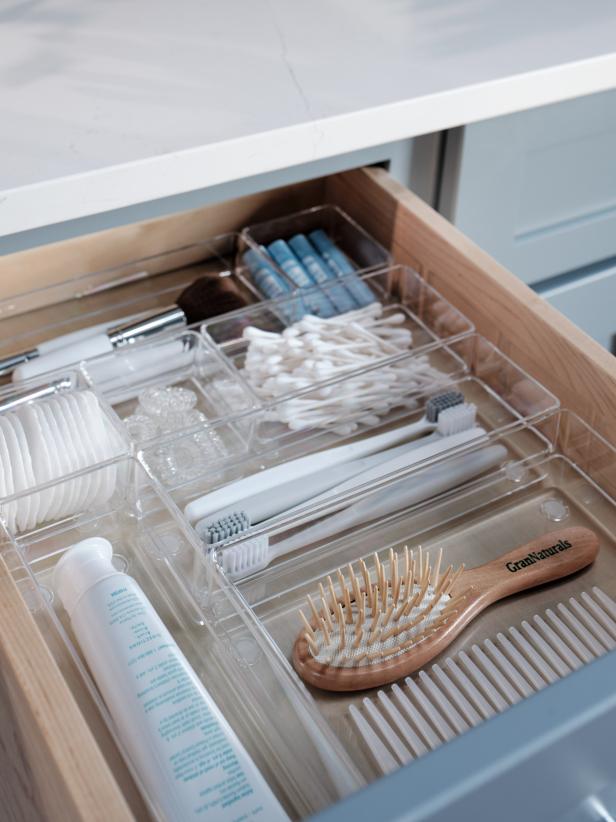
Joseph Bradshaw
"Under the sink, a lot of things get lost under there," Blakey said. "It's nice to create levels and sliding drawers that you can stack because then things stay in their place and you have more storage options." She also recommends using shallow trays to create zones for oral hygiene, grooming tools, etc. Since these are items you use every day, it's important to keep everything accessible and simple. "If you want things to maintain that aesthetic, it needs to be easy," Blakey said. If trays and bins shift around when you open the drawers in a rush to get ready in the mornings, Chris Allen has a great solution he uses all the time in client projects: museum gel. It's a clear adhesive gel you place on the bottom corners of bins and trays in drawers that won't cause any damage or leave residue behind. "When you open a drawer, you don’t want stuff shaking around, so it keeps everything in place," Allen explained.
"Having organized labeled bins by categories really helps, especially for busy families," Gill shared. She also recommends decanting everyday essentials, like hand soap, cotton swabs and cotton balls, into beautiful canisters. Making everything visible and accessible, especially for kids, makes it easy to keep things in order.
Eisland likes using lazy Susans in the bathroom. "Using a turntable under your sink gives your products a home, gives you quick access to what you use [...] and the structure from the divided turntable makes it so your products aren't falling over."
Shop the Pros' Picks
How to Hide the 'Ugly Stuff'
We all have it — chewed-up pet toys, messy cables, plastic kids' toys, resistance bands bought with good intentions — the necessary but unattractive items that stick out like sore thumbs. With a few clever products, though, and some tips from the pros, you can disguise those eyesores as intentional pieces of decor.
"One of my favorite things for families is a bin I call the 'find a home bin.' I just go through the heavy traffic areas and add [things that need to be put away] to the bin and set it down," Blakey explained. Just picking up things off the floor and containing them in a manageable way makes the task of cleaning up less daunting. "It's a nice way to not feel like you have to do it all right then and perfectly ... You just have to do what makes sense for you. It's like this freeing idea for a lot of moms."
As far as concealing everyday items that aren't "pretty" but serve a purpose, baskets work wonders. "In terms of hiding workout weights and pet stuff, I just like doing a big round basket," said Gill. She also recommended a small box for hiding cords or velcro strips for corralling them. Ruff also likes using velcro ties with labels to keep wires neat and tidy.
Shop the Pros' Picks
Keep Cord Chaos Under Control: Cable Management Tips, Products and Ideas
Take the time to organize all those electrical wires in your home office with these simple tips.
If You Only Tackle One Area...
Each expert has a different approach to prioritizing a single spot in your home to organize. Certainly, there isn't a one-size-fits-all answer. As Ruff pointed out, "It should be the area of your home that most impacts your daily life."
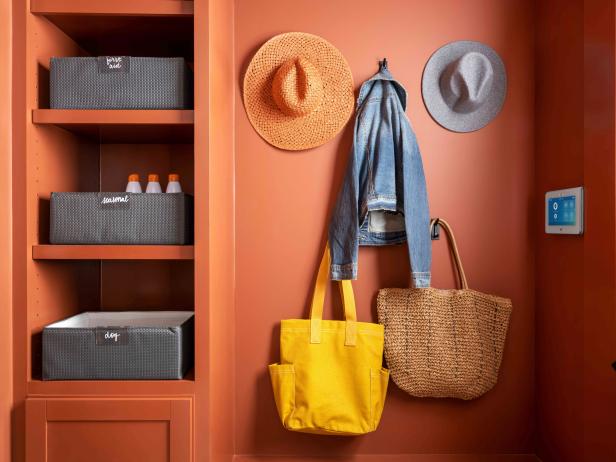
JOSEPH BRADSHAW
For most of us, that's likely the closet or entryway. Gill explained, "The closet is where you start and end each day. So, feeling like it's really lovely and organized and functional can set you up for success straight away." She added that because closets are often small, the financial commitment will be minimal. Also, decluttering is free ... so there's that.
Shop the Pros' Picks
Blakey says the entry is a good place to start. "It's the first place you walk in your home that kicks off whether you feel a sense of 'ahh' or 'ah crap.'" Having an orderly system in place from the moment you enter your home, prevents you from feeling overwhelmed and stressed. Just adding a basket for shoes or hanging some wall hooks can immediately alleviate entryway clutter.
More Expert Storage Tips and Tricks to Try
One thing Gill emphasized was the importance of uniform containers. "I think people underestimate when they buy products ... [in] a jumble of different styles, even if everything is organized, it doesn't look cohesive," she said. "Opt for the same style and color when choosing bins, baskets, etc. to create a cohesive look that's easy on the eyes." This is the key to getting that Insta-worthy display. For an organized space to function properly, uniformity is crucial.
Blakey uses a rather ingenious method for moving clutter out of her house and her clients' homes. A "transition bin," as Blakey calls it, houses all of those little knick-knacks and miscellaneous items that need to be transitioned out of your house. It could be anything from "Tupperware from a meal that a friend brought [to] baby items they've outgrown that you need to donate," she said. The idea is that you put temporary items in one basket so that it's not cluttering up your coffee table or kitchen counter, and aim to empty the basket by the end of the week. Blakey said her clients love this method because it sets up your weekly checklist and clears clutter all at once.
Shop the Pros' Picks
"...[W]e always recommend that people start small when organizing," Ruff said. "Maybe it's just a drawer that frustrates you every time you try to find the scissors or it's a cabinet that won't properly shut because it's too full. If you start small, it's more likely that you'll stick with it and make it a lifelong sustainable habit."
There you have it, folks. Getting and staying organized doesn't have to be a massive undertaking. Honing in on just one area might be all the motivation you need to tackle other troublesome spots.







